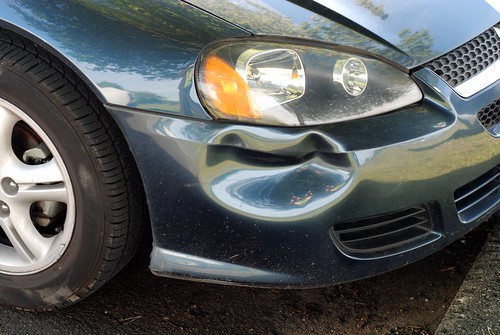Good Accident Attorneys and Accident Lawyers have always known that safety is the purpose of tort law. They know that truck crashes, semi tractor-trailer highway accidents, motorcycle accidents, automobile accidents, large truck crashes and construction accidents can have devastating effects on Hoosier families. Those affects can be the loss of income and medical bills from injuries such as broken bones, spinal cord injuries resulting in paralysis such as paraplegia and quadriplegia, brain injury, burns, amputations and back injury.
The Federal Motor Carrier Safety Administration (FMCSA) knows that safety is crucial to the bottom line of companies and for the health of America’s working class. The FMSCA has issued its opinions on safety. The following is a part of its safety statistics.
Why “Safety is Good Business”?
Crashes are devastating in terms of fatalities and injuries, financial costs, damaged reputations, the inability to attract and retain good drivers, and general goodwill in the industry and community.
- In 2005, there were 5,212 fatalities and 91,993 injuries from large truck crashes, and 335 fatalities and 14,283 injuries from bus crashes.
- The average cost of a large truck crash involving a fatality is $3.6 million per crash.
- A crash with injuries costs almost $200,000 per crash.
- The average cost of all large truck crashes is about $91,000 per crash.
Young and Young keeps tabs on the publications of the FMSCA to keep pace with safety developments. We do this to stay on the front line in our fight to promote safety. We also do this because when the system fails in its initial purpose, i.e. accident and injury prevention, we have the tools and the evidence necessary to insure Hoosiers are properly compensated for the injuries caused by negligent persons. I leave you now on an up note, Crashes are preventable.
The good news is that many crashes are preventable. For example:
- In 1997, 22% of large truck fatal crashes involving more than one vehicle were speeding related (Speeding Study).
- In 2003, about 2% of drivers with a commercial driver’s license (CDL) used controlled substances, and 0.2% used alcohol (0.04 or higher blood alcohol content) while performing their duties (Drug and Alcohol Survey).
- 5.5% of fatal truck crashes are caused by driver fatigue (Hours of Service News Release).
- A 2006 study found that only 59% of commercial motor vehicle (CMV) drivers wear safety belts. In 2005, of the 696 CMV drivers who died in truck crashes, 344 were not wearing safety belts (Safety Belt Studies).
- Research has shown that there is a significant relationship between driver job change rate (turnover) and crash involvement (Driver Retention).


 The Indiana State Police and local law enforcement have been very busy responding to major and minor car crashes related to winter storms and hazardous road conditions in the past several days. Indiana motorists should drive defensively and maintain vigilance-especially when the roads are covered with ice and snow.
The Indiana State Police and local law enforcement have been very busy responding to major and minor car crashes related to winter storms and hazardous road conditions in the past several days. Indiana motorists should drive defensively and maintain vigilance-especially when the roads are covered with ice and snow. letters from terrible lawyers asking me, and all the other lawyers in town, to vote for them as a Superlawyer. I refused to do so because I knew they were not good lawyers, just someone who does not have the experience and knowledge to be a board certified lawyer. Once these people get the Superlawyer label, they put it on their website as if it means anything. I tell you now, we have two lawyers in this firm who have been named Superlawyers, but we don’t tell anyone that because we know it means nothing. In fact the first thing that happens when you are named a Superlawyer is you get a call from the company that publishes the magazine asking you to take a full page ad to publicize the fact that you are a Superlawyer. It is an advertising scheme, the magazine made up the label to make money and to fool the public, nothing more.
letters from terrible lawyers asking me, and all the other lawyers in town, to vote for them as a Superlawyer. I refused to do so because I knew they were not good lawyers, just someone who does not have the experience and knowledge to be a board certified lawyer. Once these people get the Superlawyer label, they put it on their website as if it means anything. I tell you now, we have two lawyers in this firm who have been named Superlawyers, but we don’t tell anyone that because we know it means nothing. In fact the first thing that happens when you are named a Superlawyer is you get a call from the company that publishes the magazine asking you to take a full page ad to publicize the fact that you are a Superlawyer. It is an advertising scheme, the magazine made up the label to make money and to fool the public, nothing more. traffic laws, including exercising reasonable care when sharing the roadway with pedestrians. Pedestrians in a crosswalk have the right of way. While this is the law, many drivers do not follow this rule of the road which is aimed at preventing injuries. Serious pedestrian accident injuries could include brain or spinal cord injuries, broken bones, or even death. Pedestrians aren’t of course always blameless: We have all seen a pedestrian crossing a multi-lane road that reminds us of the video game called "Frogger." That’s why motorists have to be extremely vigilant at all times.
traffic laws, including exercising reasonable care when sharing the roadway with pedestrians. Pedestrians in a crosswalk have the right of way. While this is the law, many drivers do not follow this rule of the road which is aimed at preventing injuries. Serious pedestrian accident injuries could include brain or spinal cord injuries, broken bones, or even death. Pedestrians aren’t of course always blameless: We have all seen a pedestrian crossing a multi-lane road that reminds us of the video game called "Frogger." That’s why motorists have to be extremely vigilant at all times. Magazine. The title of the article is Merging Man and Machine, The Bionic age. The article, written by Josh Fischman, details the potential of many different devices which are revolutionizing the field of bionics and aid to those who have lost an arm or leg or have lost the use of their arms or legs. The technology is much too complicated to explain in this short blog. In a nutshell, scientists are tapping into the remaining nerves in the injured person’s body to communicate with robotic devices and move them as if they were the person’s own limb. Even more exciting is that the field is not limited to prosthetic arms or legs. Scientists have implanted devices that help the deaf hear and the blind to see, using variations on this same technology. One man, described in the article as having the use of his arms, but not below his wrist (i.e. he can move his arms but his hands do not work, was implanted with a device that allowed him to move his fingers. This device lets the man eat and do some very basic activities of daily living.
Magazine. The title of the article is Merging Man and Machine, The Bionic age. The article, written by Josh Fischman, details the potential of many different devices which are revolutionizing the field of bionics and aid to those who have lost an arm or leg or have lost the use of their arms or legs. The technology is much too complicated to explain in this short blog. In a nutshell, scientists are tapping into the remaining nerves in the injured person’s body to communicate with robotic devices and move them as if they were the person’s own limb. Even more exciting is that the field is not limited to prosthetic arms or legs. Scientists have implanted devices that help the deaf hear and the blind to see, using variations on this same technology. One man, described in the article as having the use of his arms, but not below his wrist (i.e. he can move his arms but his hands do not work, was implanted with a device that allowed him to move his fingers. This device lets the man eat and do some very basic activities of daily living. In the winter volume of its quarterly publication of the TBI Challenge, the Brain Injury Association of America published some facts about the rate of divorce among couples when one of the partners suffers a brain injury. The good news is that statistics show that overall the rate of divorce for couples where one of the partners has a brain injury is consistent with national norms. The statistics do indicate that more severe the injury, the higher the rate of divorce. Age seems to matter, those who were 60 or older, at the time of the injury, were more likely to stay together. In addition for people married longer before the injury the rate of divorce after the injury goes down.
In the winter volume of its quarterly publication of the TBI Challenge, the Brain Injury Association of America published some facts about the rate of divorce among couples when one of the partners suffers a brain injury. The good news is that statistics show that overall the rate of divorce for couples where one of the partners has a brain injury is consistent with national norms. The statistics do indicate that more severe the injury, the higher the rate of divorce. Age seems to matter, those who were 60 or older, at the time of the injury, were more likely to stay together. In addition for people married longer before the injury the rate of divorce after the injury goes down. Many of those incidents can result in what appears to be minor fender-benders. However, so-called “low impact cases” (those that generally involve speeds of less than 10 mph) can at times be deceiving. The amount of injury to a human body in a car accident is not always directly proportional to the damage to the cars involved in the traffic accident. This is a matter of energy management. We all know of incidents where vehicles have been completely torn to shreds but the driver walked away without a scratch, and other cases where despite minimal amount of visible property damage to the car, the occupants were seriously injured.
Many of those incidents can result in what appears to be minor fender-benders. However, so-called “low impact cases” (those that generally involve speeds of less than 10 mph) can at times be deceiving. The amount of injury to a human body in a car accident is not always directly proportional to the damage to the cars involved in the traffic accident. This is a matter of energy management. We all know of incidents where vehicles have been completely torn to shreds but the driver walked away without a scratch, and other cases where despite minimal amount of visible property damage to the car, the occupants were seriously injured.